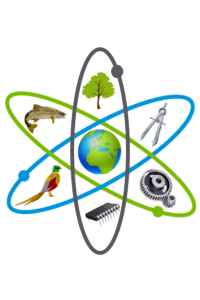BUSER Transcutaneous Electric Nerve Stimulator Device Design
BUSER Transcutaneous Electric Nerve Stimulator Device Design
TENS device, gate-control theory, oscilloscope, pertinax, breadboard,
___
- Arik, M. I., Kiloatar, H., Aslan, B., & Icelli, M. (2022). The effect of TENS for pain relief in women with primary dysmenorrhea: A systematic review and meta-analysis. Explore-The Journal of Scıence and Healıng 18(1), 108-113. https://doi.org/10.1016/j.explore.2020.08.005.
- Bilek, F., Karakaya, M. G., & Karakaya, İ. Ç. (2021). Immediate effects of TENS and HVPS on pain and range of motion in subacromial pain syndrome: A randomized, placebo-controlled, crossover trial. Journal of Back and Musculoskeletal Rehabilitation, 34(5), 805-811. https://doi.org/10.3233/BMR-191833.
- Buran, R. (2002). Fizik tedavi yöntemleri ve mikrodenetleyici ile tens tasarımı. İstanbul Teknik Üniversitesi, Fen Bilimleri Enstitüsü, Elektronik ve Haberleşme Mühendisliği Anabilim Dalı, Yüksek Lisans Tezi, İstanbul.
- Dailey, D. L., Vance, C. G. T., Chimenti, R., Rakel, B. A., Zimmerman, M. B., Williams, J. M., Sluka, K. A., & Crofford, L. J. (2022). The Influence of Opioids on Transcutaneous Electrical Nerve Stimulation Effects in Women With Fibromyalgia. The Journal of Pain, 23(7), 1268-1281. https://doi.org/ 10.1016/j.jpain.2022.02.008.
- Doğan, O., & Kılınçdemir, M. (2017). Tens cihazı. Yakın Doğu Üniversitesi, Biyomedikal Mühendisliği Bölümü, Bitirme Projesi, Lefkoşa.
- Guastella, V., Mick, G., & Laurent, B. (2008). Non-pharmacologic treatment of neuropathic pain. Presse Medicale, 37(2 Pt 2), 354-7. https://doi.org/10.1016/j.lpm.2007.11.008.
- Güzel Ş. (2018). Ergonomik EMS (elektro kas uyarım) Sistemi ile Diyabetik Polinöropati Ağrı Etkilerinin Azaltılması. Erciyes Üniversitesi, Fen Bilimleri Enstitüsü, Mekatronik Mühendisliği Anabilim Dalı, Yüksek Lisans Tezi, Kayseri.
- Johnson, M. I., & Jones, G. (2017). Transcutaneous electrical nerve stimulation: current status of evidence. Pain Management, 7(1), 1-4. https://doi.org/10.2217/pmt-2016-0030.
- Johnson, M. I., Paley, C. A., Wittkopf, P. G., Mulvey, M. R., & Jones, G. (2022). Characterising the Features of 381 Clinical Studies Evaluating Transcutaneous Electrical Nerve Stimulation (TENS) for Pain Relief: A Secondary Analysis of the Meta-TENS Study to Improve Future Research. Medicina, 58(6), 803. https://doi.org/10.3390/medicina58060803.
- Katta, M.R., Valisekka, S. S., Agarwal, P., Hameed, M., Shivam, S., Kaur, J., Prasad, S., Bethineedi, L. D., Lavu, D. V., & Katamreddy, Y. (2022). Non-pharmacological integrative therapies for chronic cancer pain. Journal of Oncology Pharmacy Practice, 9:10781552221098437. https://doi.org/10.1177/10781552221098437.
- Kim, J., Jung, J. I., Na, H. S., Hong, S. K., & Yoon, Y. W. (2003). Effects of morphine on mechanical allodynia in a rat model of central neuropathic pain. Neuroreport, 14(7), 1017-20. https://doi.org/ 10.1097/01.wnr.0000070190.28954.ec.
- Mokhtari, T., Ren, Q., Li, N., Wang, F., Bi, Y., & Hu, L. (2020). Transcutaneous Electrical Nerve Stimulation in Relieving Neuropathic Pain: Basic Mechanisms and Clinical Applications. Current Pain and Headache Reports, 24(4):14. https://doi.org/10.1007/s11916-020-0846-1.
- Pal, S., Dixit, R., Moe, S., Godinho, M. A., Abas, A. B., Ballas, S. K., Ram, S., & Yousuf, U. A. M. (2020). Transcutaneous electrical nerve stimulation (TENS) for pain management in sickle cell disease. Cochrane Database of Systematic Reviews, 3(3):CD012762. https://doi.org/ 10.1002/14651858.CD012762.pub2.
- Santuzzi, C. H., Neto Hde, A., Pires, J. G., Gonçalves, W. L., Gouvea, S. A., & Abreu, G. R. (2013). High-frequency transcutaneous electrical nerve stimulation reduces pain and cardio-respiratory parameters in an animal model of acute pain: Participation of peripheral serotonin. Physiotherapy Theory and Practice, 29(8), 630-8. https://doi.org/10.3109/09593985.2013.774451.
- Sluka, K. A., & Walsh, D. (2003). Transcutaneous electrical nerve stimulation: Basic science mechanisms and clinical effectiveness. The Journal of Pain, 4(3), 109-21. https://doi.org/10.1054/jpai.2003.434.
- Teoli, D., & An, J. (2022). Transcutaneous Electrical Nerve Stimulation. [Updated 2022 May 26]. In: StatPearls [Internet]. Treasure Island (FL): StatPearls Publishing; 2022 Jan-. Available from: https://www.ncbi.nlm.nih.gov/books/NBK537188/.
- Uysal, R. (2018). Tens Device Design for Stimulation of the Acupuncture Points. Near East University, Graduate Scholl of Applied Sciences, Department of Biomedical Engineering, Master Thesis, Nicosia.
- Vance, C. G., Rakel, B. A., Blodgett, N. P., DeSantana, J. M., Amendola, A., Zimmerman, M. B., Walsh, D. M., & Sluka, K. A. (2012). Effects of transcutaneous electrical nerve stimulation on pain, pain sensitivity, and function in people with knee osteoarthritis: a randomized controlled trial. Physical Therapy, 92(7), 898-910. https://doi.org/10.2522/ptj.20110183.
- Vella, S. P., Chen, Q., Maher, C. G., Simpson, P. M., Swain, M. S., & Machado, G. C. (2022). Paramedic management of back pain: a scoping review. BMC Emergency Medicine, 22(1), 144. https://doi.org/10.1186/s12873-022-00699-1.
- Wu, Y., Zhu, F., Chen, W., & Zhang, M. (2022). Effects of transcutaneous electrical nerve stimulation (TENS) in people with knee osteoarthritis: A systematic review and meta-analysis. Clinical Rehabilitation, 36(4), 472-485. https://doi.org/10.1177/02692155211065636.
- ISSN: 2458-8989
- Başlangıç: 2015
- Yayıncı: Cemal TURAN
BUSER Transcutaneous Electric Nerve Stimulator Device Design
Gökhan NUR, Büşra Nur BARIŞ, Büşra LEVENT, Buse Selin SAZAKLIOĞLU, Elvan AK
Berat ÇINAR ACAR, Zehranur YÜKSEKDAĞ
Parameters Response of Salt-Silicon Interactions in Wheat
Mehmet Hanifi AKGÜN, Nuray ERGÜN
Okan AKYOL, Tülin ÇOKER, Hatice Betül TOPRAK, Christian CAPAPÉ
Urwah INAM, Qadeer Mohammad ALİ, Quratulan AHMED, Levent BAT
